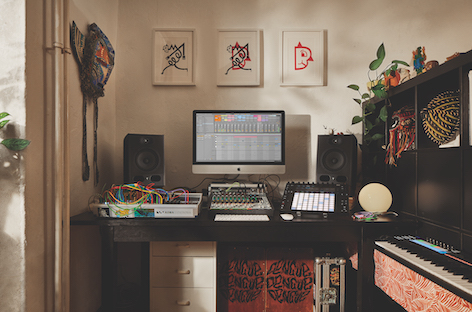Ableton announces Live 11
The latest version includes five new devices and major advancements in the areas of comping and MIDI Polyphonic Expression.

Ableton has announced Live 11.
The latest version of the influential DAW comes just after two years after the introduction of Ableton 10 and integrates several major aspects into the popular Ableton workflow. Live 11 makes comping, or piecing together the best moments of multiple performances, far easier. The new comping tool also allows for quicker and more precise splicing and sampling, allowing for radical, on-the-fly experimentation with arrangement, e.g. easily splicing and substituting samples into the timeline of an existing track.
Another major development is the integration of MPE, or MIDI Polyphonic Expression, which allows for touch sensitivity and other subtle, acoustic-instrument style expressions—such as”bends, slides and pressure for each individual note in a chord”—with a MIDI environment. Owners of MPE-compatible hardware can begin using Live 11’s MPE features right away, but those without MPE hardware can edit MPE automation data using Ableton’s new “Expression View.” While Ableton is integrating MPE after competing DAWs like Bitwig and even GarageBand, popular Ableton devices like Wavetable, Sampler, and Arpeggiator will now have native MPE support.
New devices include Hybrid Reverb, which allows users to place their sounds in any space, use the algorithmic slide to control and modulate the reverb tail, or play the device like an instrument and Spectral Resonator, which builds off of Live’s Resonator device, breaking the audio signal into partials and allowing users to stretch, shift and blur the result. The latter is also playable via MIDI sidechain.
Spectral Time, meanwhile, is a simple but powerful frequency-based delay effect, while the Robert Henke-designed PitchLoop89 is built to create glitches and shimmering delays. Finally, Inspired By Nature is a suite of six instruments that use natural and physical processes—such as the root structure of plants or the movement of particles—as their inspiration.
Several randomization features, like Note Chance and Velocity Chance, will allow musicians to add unpredictable variations to their productions. Along with MPE, a Tempo Following feature makes Ableton Live 11 more “live,” the DAW listening and adjusting its tempo based on incoming audio in real-time, following the human leader rather than vice-versa. DJs can use this feature to turn Ableton Live into a tempo-synced FX box. In addition, Ableton Live 11 comes with rack improvements, allowing users to save macro states for recall at a later time and use 16 macros, as opposed to the previously available 8.
For a list of all of Ableton Live 11’s new features, head over to the manufacturer’s website.
Live 11 will be available in early 2021. The Beta Version is currently available for all owners of Ableton Live 10 Standard and Suite. From now until the release, the various versions of Live 10 are selling for 20% off. Those who purchase a copy of Live 10 will be entitled to a free upgrade to Live 11 when it’s released.
Watch a video about Ableton Live 11.
Ableton will release Live 11 in early 2021. The Standard version will retail for €349, Suite for €599 and Intro for €79.
Carlos Hawthorn contributed to this piece.